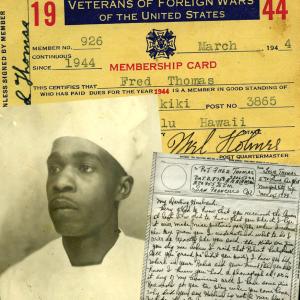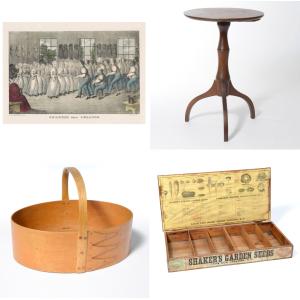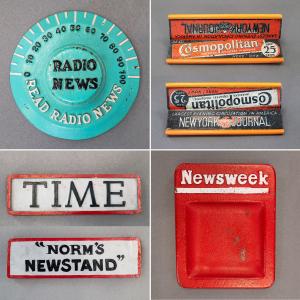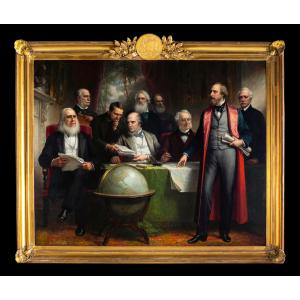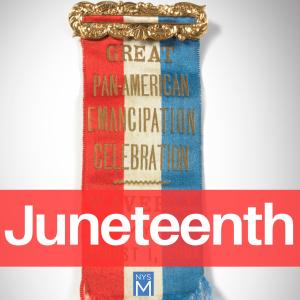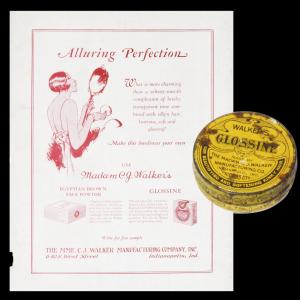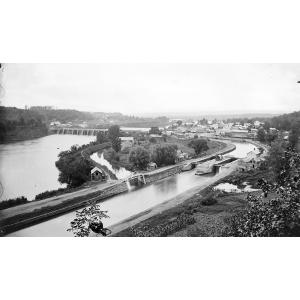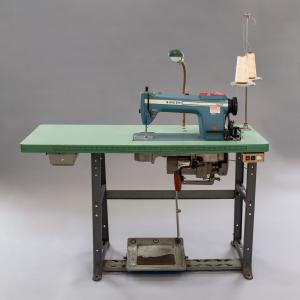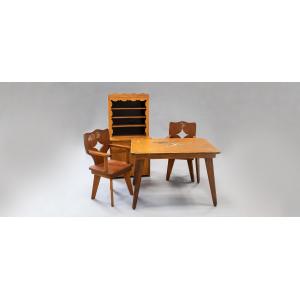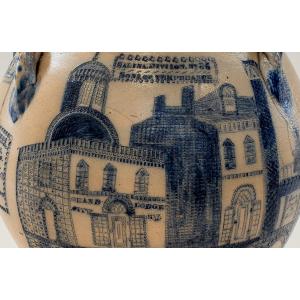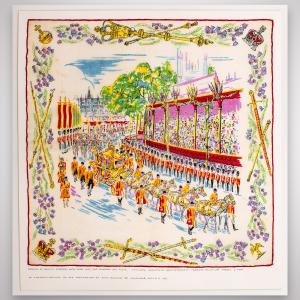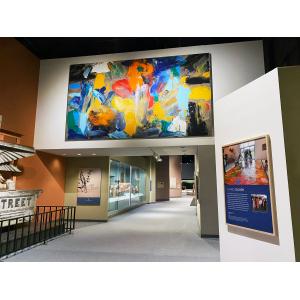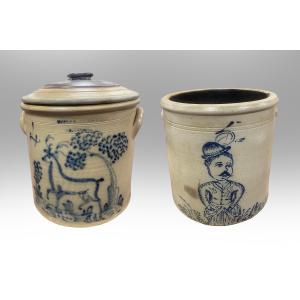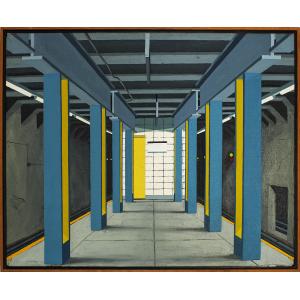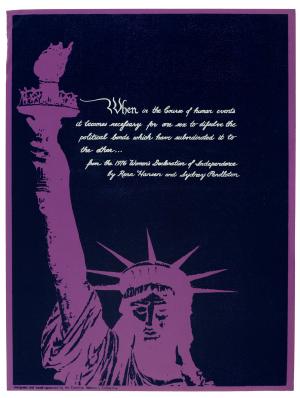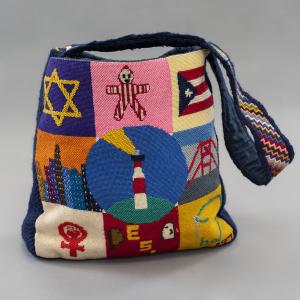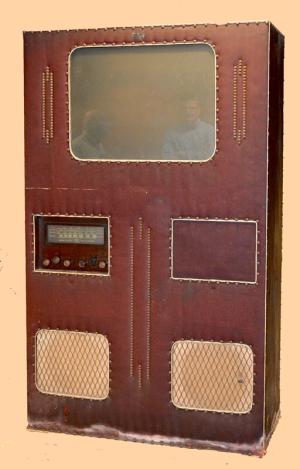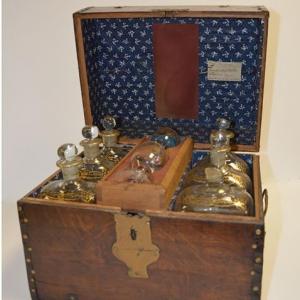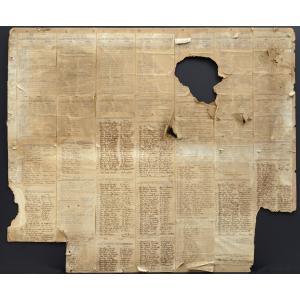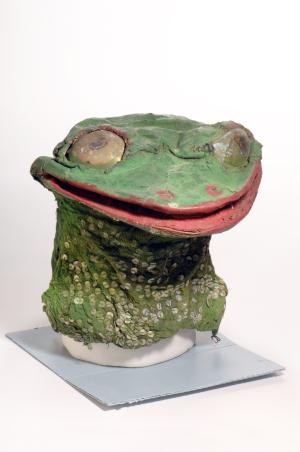News Article
From the Collections: Shakers and the New York State Museum
Published January 17, 2024 | Social History
Spiller Newspaper Paperweight Collection
Published December 7, 2023 | Cultural History
Mortimer Spiller was born in 1922 to Russian immigrants who settled in LeRoy, New York. Spiller’s college training in business and advertising was interrupted by service in World War II. After the war, he was eager to complete his education and pu...
The Atlantic Cable Projectors (1895) returns to the New York State Museum
Published December 5, 2023 | Cultural History
Daniel Huntington (1816–1906) The Atlantic Cable Projectors, 1895 Oil on canvas
From the Collections: Madam C.J. Walker’s Glossine Hair Paste and Advertisement
Published February 22, 2023 | Social History
Madam C. J. Walker (1867–1919) was a successful entrepreneur, businesswoman, philanthropist, and social and political activist during a time when both African Americans and women were not common in the world of business. In 1906, she started her o...
Transporting Grains on the Erie Canal
Published October 25, 2022 | Economic History
On October 26, 1825, the Erie Canal officially opened from Albany to Buffalo. The canal was an immediate success: shipping costs plummeted, and new services and goods became widely available. Cheap, reliable transportation opened new markets ...
New Acquisition: Singer Industrial Sewing Machine, ca. 1972
Published September 14, 2022 | Social History
One sewing machine, two stories: Some artifacts in our collection hold the stories of multiple individuals. This ca. 1972 Singer industrial sewing machine, recently donated to the NYSM, belonged to Tsui Ping Chu, an immigrant from Hong Kong. Ch...
New Acquisition: Play Furniture
Published July 25, 2022 | Cultural History
This set of child-sized furniture was a birthday gift to the donor, Mary Alice Cole, from her parents, in the 1960s. She recalled many families in Watervliet, NY, having play houses in the back yard, where “playing house” was a popular activity fo...
New Acquisition: Stoneware Water Cooler
Published May 18, 2022 | Cultural History
This impressive stoneware water cooler is incised and impressed with decorations that depict the celebration of the Great National Jubilee of the Order of the Sons of Temperance, an organization founded in New York City in 1842. Temperance icon...
New Acquisition: Souvenir Handkerchief Designed by Marion Weeber
Published March 14, 2022 | Cultural History
This screen-printed linen handkerchief was designed by Marion Weeber (1905-2000) in honor of King George VI’s coronation in England on March 8, 1937. It was manufactured by Burmel and sold at finer department stores. The handkerchief was framed an...
Now on View: Charles Clough's "Clufffalo: Art Omi"
Published January 10, 2022 | Cultural History
A gift to the NYSM last year, Charles Clough's monumental painting—an awe-inspiring 9 x 16 feet—has just been installed in New York Hall. To create it, Clough invited visitors to Art Omi, a contemporary art gallery and sculpture park in Ghent, New...
New Acquisition: Decorative Stoneware
Published July 1, 2021 | Cultural History
Since 1996, Adam Weitsman has donated over 500 pieces of decorated stoneware to the New York State Museum. While only a portion of these are on view in the galleries, this collection receives lots of attention from researchers and other muse...
New Acquisitions: Artwork by Ken Rush
Published April 8, 2021 | Cultural History
The NYSM History Collection recently acquired a collection of paintings by Ken Rush (b.1948). Rush divides his time between Vermont and Brooklyn producing rural and urban subjects that move between the realistic and the abstract. In thi...
New Acquisition: Voter Campaign Poster by Emily Ree
Published February 11, 2021 | Social History
Since 2017, LinkNYC Wi-Fi stations have been used to display the work of local artists on digital billboards across New York City. Hudson Valley comic artist Emily Ree’s work was one of 40 submissions chosen for the “Visualize the Vote” campaign i...
New Acquisition: Harriet Alonso Needlework
Published December 7, 2020 | Social History
Harriet Alonso began working with embroidery in 1974. Influenced by the imagery of political posters, she soon used the medium to express her ideas about the causes she was passionate about, including women’s rights, educational equality, and peac...
New Acquisition: 1947 Tavern Television
Published August 4, 2016 | Social History
The State Museum recently acquired a fully-restored 1947 Tavern Television made by the United States Television Manufacturing Corporation (USTMC). Made in New York City, this unit is believed to be one of only five known sets left in the United St...
New Acquisition: Liquor Chest Used by NYS Soldiers in American Revolution and War of 1812
Published February 29, 2016 | Political History
A liquor chest used by soldiers in the American Revolution and the War of 1812 was recently donated to the New York State Museum. The chest was donated by the descendants of Captain Abraham Swartwout (an officer on General George Washington...
Museum Adds 1917 Women's Suffrage Petitions to Collection
Published June 26, 2015 | Social History
The Museum recently acquired a series of 1917 Franklin County women's suffrage petitions from Jean Kubaryk, a teacher at North Warren Central School District. Ms. Kubaryk had been displaying the petitions in her classroom for years, but ...
Human Frogs in the History Collections!
Published December 9, 2013 | Cultural History
The New York State Museum’s history collections contain two frog costumes for humans and one frog costume for a dog. These costumes belonged to Harry and Friede DeMarlo, a vaudeville couple that once played circuses and vaudeville houses all over ...


